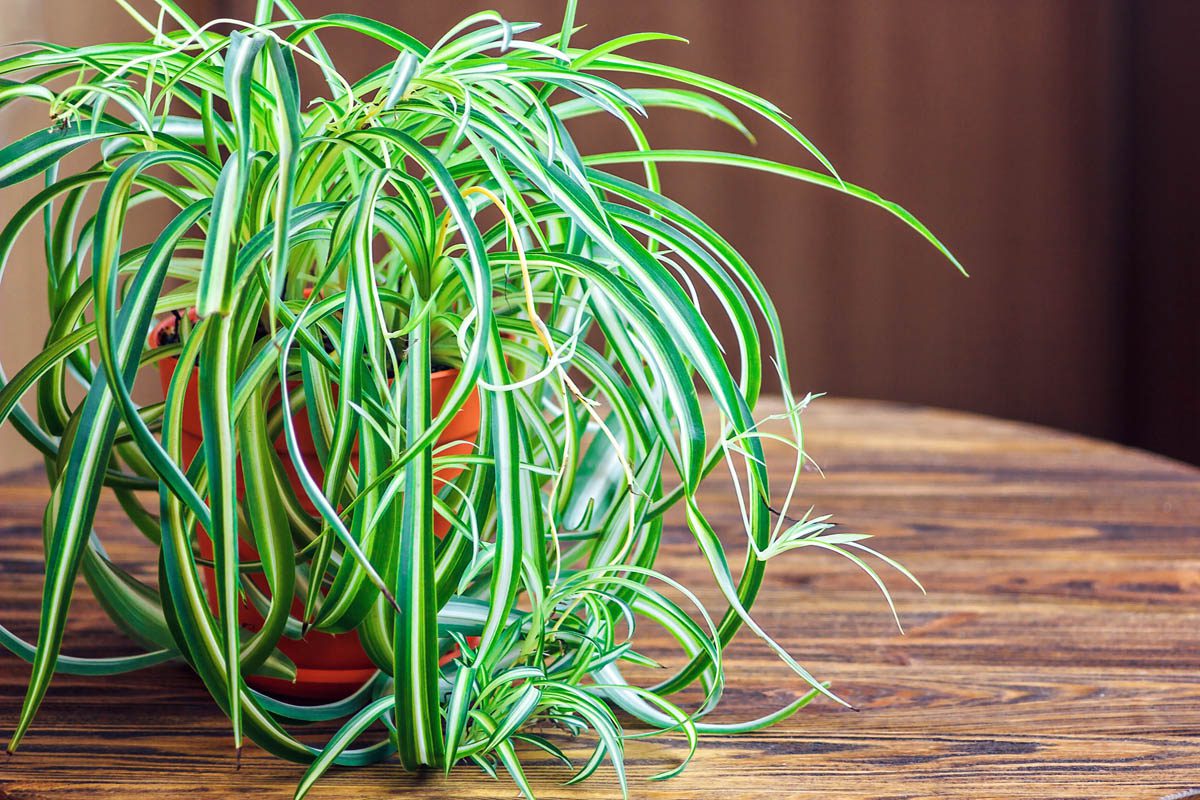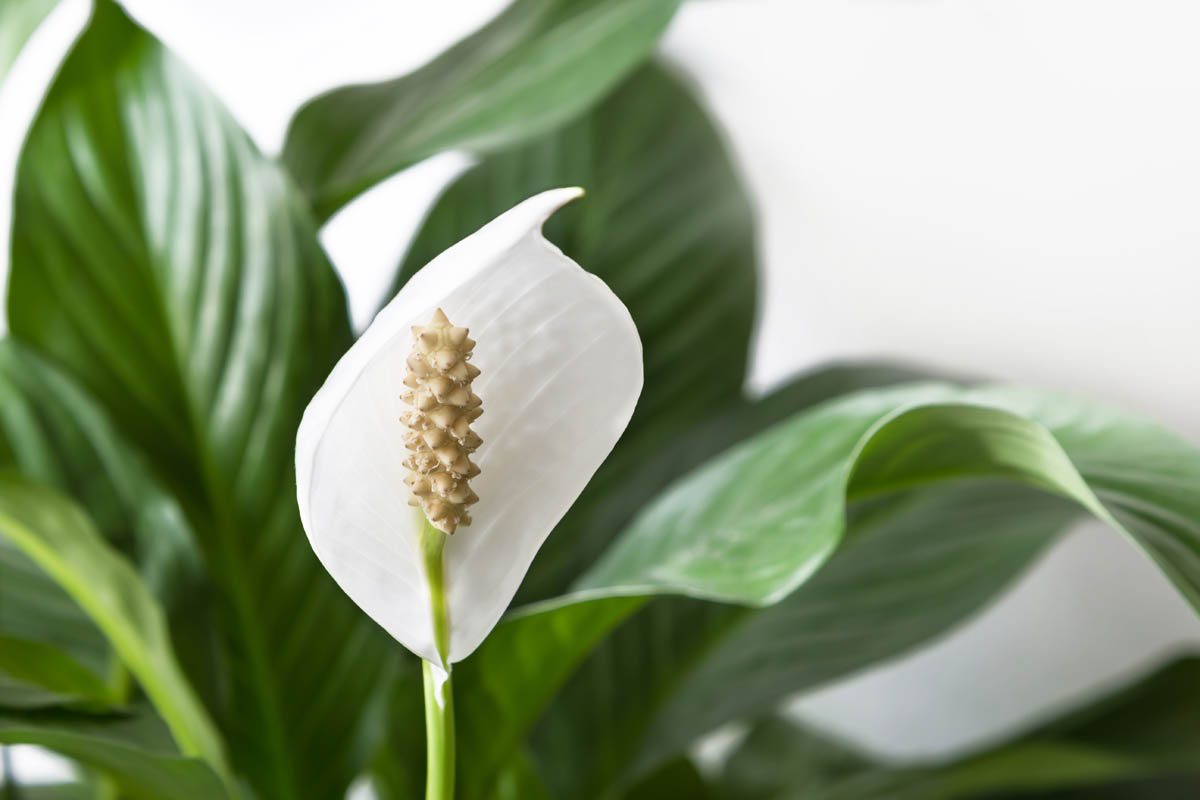Peace lily (Spathiphyllum spp.) is a perennial herbaceous plant native to the tropics of southeast Asia and Central and South America, specifically in regions like Costa Rica and Panama. This ornamental plant is popular as a houseplant for its glossy green leaves, white spathe flowers and ease of care. The ‘lily’ part of its common name refers to the flower’s resemblance to the white lily, a traditional symbol of purity. However, the peace lily isn’t a true lily, it belongs to the Araceae family, which also includes Monstera, Philodendron, Caladium, and Dieffenbachia species.
Other names:
- Spath
- White Flag
- White Anthurium
- White Sails
- Mauna Loa Peace Lily (specifically for the Spathiphyllum ‘Mauna Loa’ variety)
Is peace lily toxic to cats?
Peace lily is toxic to cats. All parts of the plant contain needle-sharp insoluble calcium oxalate (CaOx) crystals known as raphides that are stored in specialised cells known as idioblasts. When a cat bites or chews any part of peace lily, the idioblasts rupture and release the raphides into the delicate tissue of the mouth and throat causing pain and burning. This is known as mechanical irritant contact dermatitis and is a physical irritation rather than an allergic reaction.
If ingested, the crystals can cause a burning sensation in the mouth and throat, difficulty swallowing, nausea, vomiting, and other gastrointestinal symptoms. In severe cases, ingestion can lead to difficulty breathing due to the swelling of the throat, but this is rare.
Symptoms of peace lily ingestion
Most cats won’t consume a large amount of peace lily due to the sensation of burning when the plant is damaged.
- Drooling
- Loss of appetite
- Nausea
- Vomiting
- Diarrhea
- Pawing at the mouth
In rare cases, edema (swelling) of the mouth, tongue and lips and difficulty breathing.
First aid
If it is safe to do so, carefully remove any remaining plant material from the cat’s mouth and offer a drink of milk or tuna juice to flush the mouth. Most cats won’t develop symptoms, however, if they do, contact your veterinarian or pet poison helpline. In most cases, you will be recommended to watch the cat for 24-48 hours and bring it in if symptoms worsen.
Cats who are experiencing swelling or difficulty breathing will need immediate veterinary care.
Treatment
Decontamination: If ingestion was recent, the veterinarian can administer medications to make the cat vomit to decontaminate the gastrointestinal tract. This will be followed by activated charcoal which works by a process called adsorption (not absorption). As toxins pass through the GI tract, they stick to the activated charcoal. By binding to these toxins, activated charcoal prevents them from being absorbed. Instead, they pass through the digestive system and are eliminated via the feces.
Fluid support: The veterinarian may administer fluids intravenously to prevent or treat dehydration and electrolyte imbalances due to vomiting or diarrhea.
What is the prognosis?
The prognosis for peace lily ingestion is excellent, most cats will make a full recovery within a day or so.
Safety
In regards to plant toxins, peace lily is relatively low risk. Kittens and puppies are at increased risk due to their curious nature. If your kitten or cat shows an interest in your peace lily, move it to an area the cat can’t access.
Cat safe plants

If you have a cat and you also love indoor plants, you’ll want to be sure that the plants you bring into your home are pet-friendly. While there are many plants that can be harmful to cats if ingested, there are also plenty that are completely safe.
- Spider Plant (Chlorophytum comosum)
- Areca Palm (Dypsis lutescens)
- Boston Fern (Nephrolepis exaltata)
- Parlor Palm (Chamaedorea elegans)
- Swedish Ivy (Plectranthus verticillatus)
- Prayer Plant (Maranta leuconeura)
- Bamboo (Phyllostachys aurea)
- Catnip (Nepeta cataria)
The toxicity of plants can range from mild and self-limiting to life-threatening. It is important to research plants and their potential toxic properties before bringing them into the home if you have pets.
Julia is a writer and landscape consultant from Wollongong with a love of horticulture. She had been an avid gardener for over 30 years, collects rare variegated plants and is a home orchardist. Julia is passionate about learning and sharing her knowledge of plant propagation and plant toxicology. Whether it’s giving advice on landscape projects or sharing tips on growing, Julia enjoys helping people make their gardens flourish.




